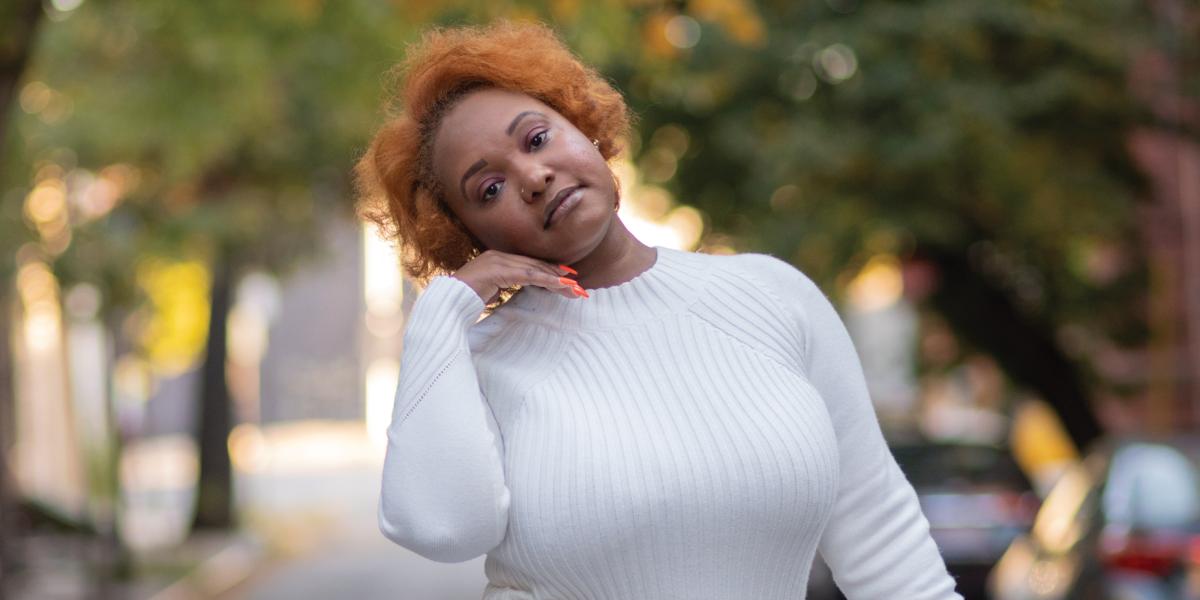Ballet After Dark
Classical dance training gave me tools to heal after trauma—and to help other survivors in Baltimore and beyond.
I’ve been dancing since I was 3 years old. I graduated from Baltimore School for the Arts, and I’ve trained with companies including the Alvin Ailey American Dance Theater and the Dance Theater of Harlem. Up until about 10 years ago, I was traveling around the country trying to be the best, the Blackest ballerina you’ve ever seen on any prestigious stage.
And then I survived a rape. I crawled from the woods battered and broken, and I had nowhere to go. There were no healing spaces centered around people who look like me, and the people I thought I would be able to rely on—police, doctors, therapists—left me feeling hopeless and alone.
It took two years for me to feel strong enough to try to dance again. I started by going to classes, and I began to recognize how when I pushed myself just to get to the weekly dance class, I was reconnecting with joy, which I thought was gone forever.
I understood movement in a different way. When I adjusted my posture, when I pushed my shoulders back, when I lengthened my neck, it empowered me. It made me feel regal. After years of being a serious student, I understood something new: This really does make me feel good.
Talk therapy was a major part of my healing process, but sometimes I just didn't have the words. I needed a space where I could sweat a little, or just get whatever was inside of me out, without having to speak. As I immersed myself in movement, I saw how impactful ballet was for my healing. Dance was medicine.
When I adjusted my posture, when I pushed my shoulders back, when I lengthened my neck, it empowered me. It made me feel regal.
I started doing research on dance therapy and read scholarly articles showing it has been helpful in releasing trauma stored in the body. Dance was directly connected to the body’s emotional interplay, which meant it was a fundamental form of expression.
So why hadn’t that been an option for me—and for others who have experienced the same type of violence and trauma that I survived? Where are we supposed to go?
They say, “if you build it, they will come.” So that's what I did. I started hosting open dance classes for community members of all ages, all levels, no experience necessary, and infusing some of the philosophies I developed in my healing process.
There was demand for more classes, more often. Church and community groups would ask, “Could you come in for a week and work with our community? Could you help us implement grounding exercises for students?” I started getting emails from people all over the state, asking where their local Ballet After Dark studio was. And then from women and children around the world.
I was not prepared for the response. Queen Latifah produced a short film about our work that screened at the 2019 Tribeca Film Festival and on the OWN network, where I was hosted by Oprah. It's amazing how just having the interest in yourself—wanting to reprocess, rebuild, and reclaim the relationship with your body—will force you to take up space in new ways. Now, not only am I “The Ballet Lady” here in Baltimore, but I have become a beacon of hope for survivors who have also contemplated whether or not the journey of healing after survival is worth it.
Our core programming, which serves community members as young as 5 years old, now includes the Black Swan cohort, Aqua-Ballet cohorts, B.A.D. Kids, B.A.D. Girls Club, and the Ballet After Dark Performance Ensemble. I had a deep desire to take the thing that brought me the most joy and to repurpose it, revolutionize it, radicalize it, and to make it not just this classical discipline that had been created for European royalty, but a way to engage, expose, and enhance the arts appreciation of little Black and brown children that look like me.
Now I can say to survivors or victims, however you choose to identify, the space is here for you. So when you're ready, you just take that leap.
Listen to Tyde-Courtney's Stoop Story
